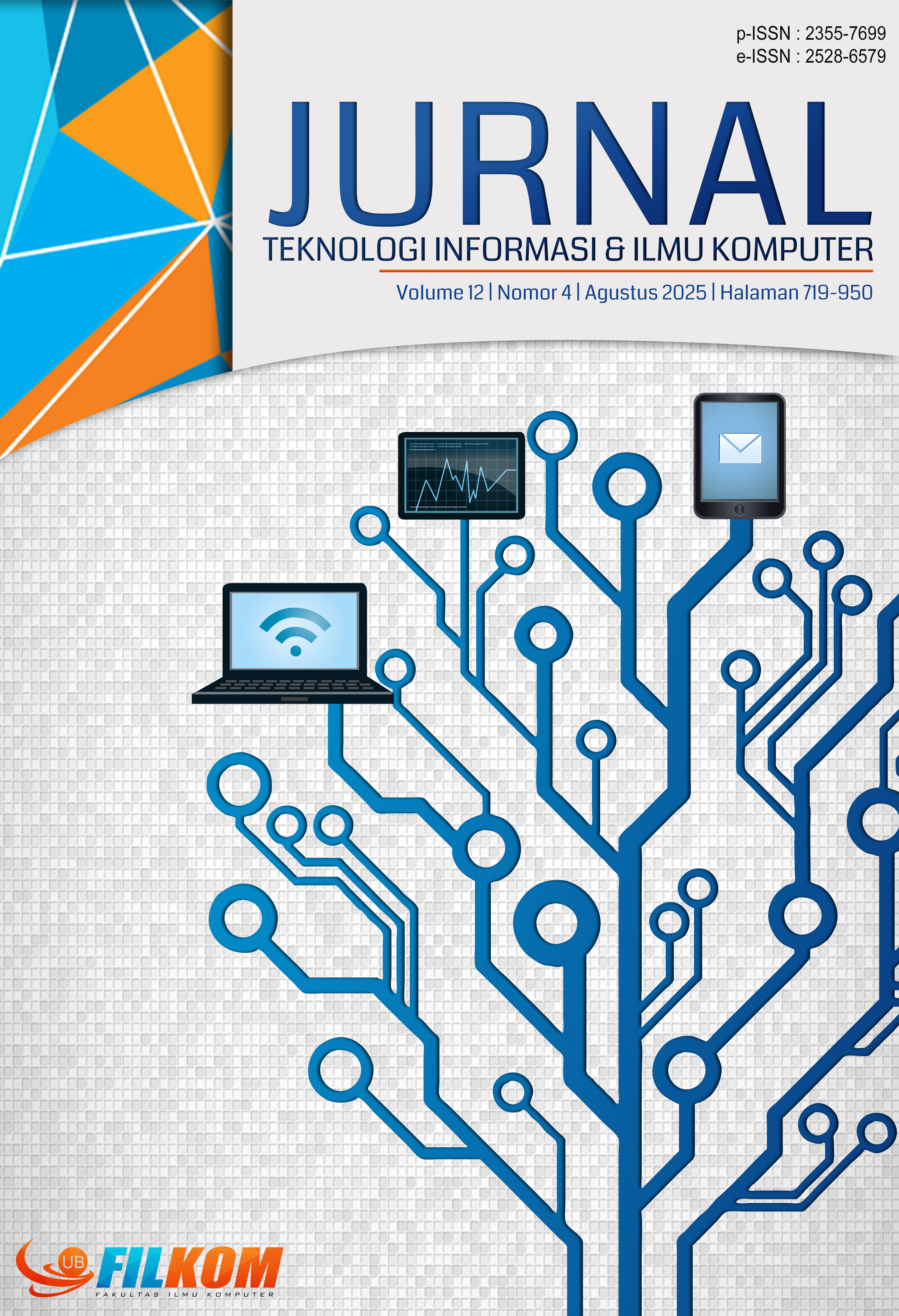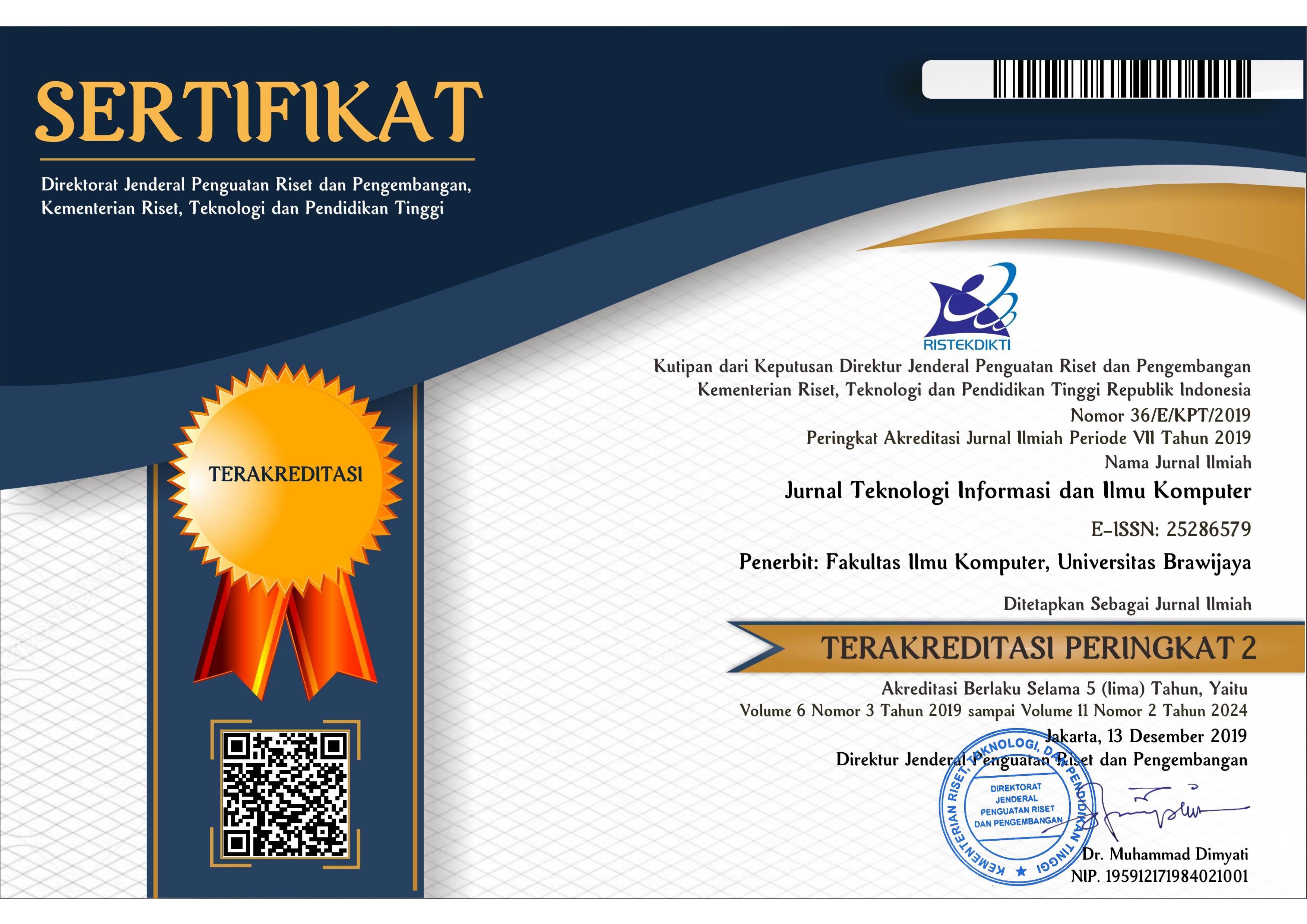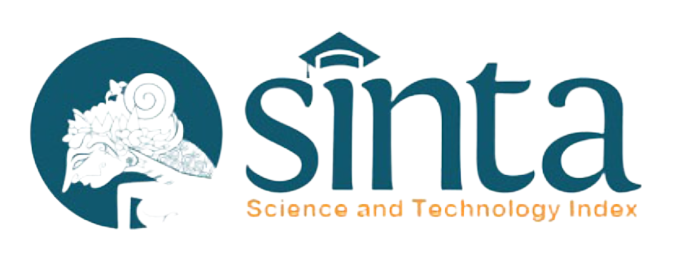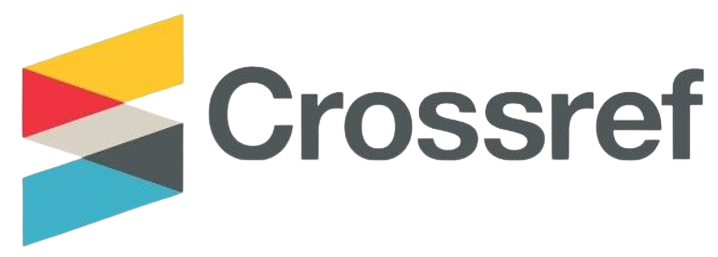Implementasi Load Balancing pada Google Cloud Platform Untuk Membangun Online Learning
DOI:
https://doi.org/10.25126/jtiik.124Abstrak
Dalam era digital, institusi pendidikan menghadapi tantangan dalam menyediakan sistem pembelajaran daring yang andal, skalabel, dan responsif terhadap lonjakan pengguna. Salah satu permasalahan utama yang sering terjadi adalah bottleneck pada server web dan database, yang dapat menyebabkan penurunan performa saat jumlah pengguna meningkat secara signifikan. Penelitian ini bertujuan untuk mengatasi permasalahan tersebut dengan mengimplementasikan load balancing pada Google Cloud Platform (GCP) guna membangun platform pembelajaran daring berbasis Moodle yang optimal. Metode yang digunakan dalam penelitian ini mencakup perancangan dan implementasi infrastruktur berbasis layanan GCP, termasuk Compute Engine untuk hosting server web, Cloud SQL sebagai database terkelola, Cloud Memorystore Redis untuk caching guna mengurangi beban query pada database, serta Cloud Filestore untuk penyimpanan data. HTTPS Load Balancer digunakan untuk mendistribusikan lalu lintas pengguna secara merata ke beberapa instance server, sementara autoscaler diaktifkan untuk menyesuaikan kapasitas sumber daya secara dinamis sesuai kebutuhan pengguna. Hasil pengujian menunjukkan bahwa bottleneck utama pada sistem e-learning terjadi pada beban tinggi di database dan server web, yang dapat diatasi dengan caching dan load balancing. Implementasi ini memungkinkan sistem menangani lonjakan lalu lintas hingga 5.000 pengguna simultan. dengan penggunaan moodle data base mencapai 80,28 %, penggunaan autoscaling mencapai level 1,916. Utilisasi mulai menurun dan menunjukkan stabilisasi mendekati nilai 1. Stabilitas ini mengindikasikan bahwa autoscaler berhasil menyesuaikan jumlah instance dengan kebutuhan beban kerja, menjaga performa optimal aplikasi. Dengan demikian, penggunaan load balancing pada GCP terbukti meningkatkan keandalan, skalabilitas, dan efisiensi platform pembelajaran daring, serta memberikan panduan praktis bagi institusi pendidikan dalam mengadopsi teknologi cloud untuk mendukung kegiatan belajar-mengajar secara daring.
Abstract
In the digital era, educational institutions face the challenge of providing a reliable, scalable and responsive online learning system to the surge of users. One of the main problems that often occurs is bottleneck on the web server and database, which can cause performance degradation when the number of users increases significantly. This research aims to overcome this problem by implementing load balancing on Google Cloud Platform (GCP) to build an optimal Moodle-based online learning platform. The method used in this research includes the design and implementation of GCP service-based infrastructure, including Compute Engine for web server hosting, Cloud SQL as a managed database, Cloud Memorystore Redis for caching to reduce query load on the database, and Cloud Filestore for data storage. HTTPS Load Balancer is used to distribute user traffic evenly across multiple server instances, while autoscaler is enabled to dynamically adjust resource capacity according to user needs. The test results show that the main bottleneck in the e-learning system occurs at high loads on the database and web server, which can be addressed by caching and load balancing. This implementation allows the system to handle traffic spikes of up to 5,000 simultaneous users. with moodle data base utilization reaching 80.28%, autoscaling utilization reaching a level of 1.916. This stability indicates that the autoscaler successfully adjusts the number of instances to the needs of the workload, maintaining optimal application performance. Thus, the use of load balancing on GCP is proven to improve the reliability, scalability, and efficiency of the online learning platform, and provides practical guidance for educational institutions in adopting cloud technology to support online teaching and learning activities.
Downloads
Referensi
AGORMEDAH, E. K., ADU HENAKU, E., AYİTE, D. M. K., & APORİ ANSAH, E. 2020. Online Learning in Higher Education during COVID-19 Pandemic: A case of Ghana. Journal of Educational Technology and Online Learning, 3(3). https://doi.org/10.31681/jetol.726441
ALIM, E. S., & JIN, H. 2017. Deployment of cloud computing for higher education using google apps. 2017 2nd International Conferences on Information Technology, Information Systems and Electrical Engineering (ICITISEE), 73–77. https://doi.org/10.1109/ICITISEE.2017.8285563
ALIZADEH, M., MEHRAN, P., KOGUCHI, I., & TAKEMURA, H. 2019. Evaluating a blended course for Japanese learners of English: why Quality Matters. International Journal of Educational Technology in Higher Education, 16(1). https://doi.org/10.1186/s41239-019-0137-2
APOKO, T. W., & SYA’BAN, M. B. A. 2022. The impact of online learning implementation on satisfaction, motivation, quality of the learning process, and student learning outcomes. AL-ISHLAH: Jurnal Pendidikan, 14(4). https://doi.org/10.35445/alishlah.v14i4.2096
ARDIANSYAH, L., & AWALLUDIN, S. A. 2023. Implementation of the K-Mean Algorithm to Determine the Level of Student Satisfaction with the Online Learning Uhamka System (OLU). JURNAL PEMBELAJARAN DAN MATEMATIKA SIGMA (JPMS), 9(1).
https://doi.org/10.36987/jpms.v9i1.4121
BOULMIER, A., ABDENNADHER, N., & CHOPARD, B. 2022. Optimal load balancing and assessment of existing load balancing criteria. Journal of Parallel and Distributed Computing, 169. https://doi.org/10.1016/j.jpdc.2022.07.002
DAFA, N., & TEWU, D. 2023. Evaluasi Pelaksanaan Pembelajaran Jarak Jauh pada Masa Pandemi Covid-19 di SMP Negeri 2 Kupang Barat. Journal on Education, 6(1). https://doi.org/10.31004/joe.v6i1.3026
ENDY SJAIFUL ALIM. 2017. Information Technology (IT) Architecture Based on Cloud Computing for Muhammadiyah Higher Education Institutions (HEIs). US-China Education Review A, 7(4). https://doi.org/10.17265/2161-623x/2017.04.004
GUMASING, M. J. J., & CASTRO, F. M. F. 2023. Determining Ergonomic Appraisal Factors Affecting the Learning Motivation and Academic Performance of Students during Online Classes. Sustainability (Switzerland), 15(3). https://doi.org/10.3390/su15031970
KAUR, M. 2020. Changes in Content of Online Teaching in pre and during COVID-19 Era: A Comparative Analysis in Private School Setup in India. JOURNAL OF TEACHER EDUCATION AND RESEARCH, 15(02). https://doi.org/10.36268/jter/15203
KHAN, A., & ALI, M. 2023. Three-Phase Load Balancing in Distribution Systems Using Load Sharing Technique †. Engineering Proceedings, 46(1). https://doi.org/10.3390/engproc2023046018
MISHRA, S. K., SAHOO, B., & PARIDA, P. P. 2020. Load balancing in cloud computing: A big picture. In Journal of King Saud University - Computer and Information Sciences (Vol. 32, Issue 2). https://doi.org/10.1016/j.jksuci.2018.01.003
MULYANI, A., KURNIADI, D., & PUTRI, M. H. 2023. Analisis Penerimaan Learning Management System Institut Teknologi Garut Menggunakan Technology Acceptance Model. Jurnal Teknologi Informasi Dan Ilmu Komputer (JTIIK), 10(4), 843–850. https://doi.org/10.25126/jtiik.2023106618
NANCY, J. J., TAMIL MANI, S., ROHITH, S., SARANRAJ, S., & VIGNESWARAN, T. (2020). Load Balancing using Load Sharing Technique in Distribution System. 2020 6th International Conference on Advanced Computing and Communication Systems, ICACCS 2020. https://doi.org/10.1109/ICACCS48705.2020.9074304
NUJID, M. M., & THOLIBON, D. A. 2023. Evaluation of Learners’ Academic Performance in Teaching and Learning Civil Engineering During the COVID-19 Pandemic. International Journal of Engineering Pedagogy, 13(3). https://doi.org/10.3991/ijep.v13i3.30147
QAZI, A., QAZI, J., NASEER, K., ZEESHAN, M., QAZI, S., ABAYOMI-ALLI, O., SAID AHMAD, I., DARWICH, M., ALI TALPUR, B., HARDAKER, G., NASEEM, U., YANG, S., & HARUNA, K. 2021. Adaption of distance learning to continue the academic year amid COVID-19 lockdown. Children and Youth Services Review, 126. https://doi.org/10.1016/j.childyouth.2021.106038
RIZKIAWAN, M. A., RAMZA, H., & ALIM, E. S. 2023. Sistem Informasi Pencatatan Aset Dan Peminjaman Barang Menggunakan Metode Pengembangan Agile Pada BPTI UHAMKA. Journal of Scientech Research and Development, 5(2). https://idm.or.id/JSCR/in
RIZKIAWAN, M. A., SIREGAR, M. T., RAMZA, H., & ALIM, E. S. 2023. Designing an Information System for Recording Assets (Equipment) and Lending of Goods UHAMKA Information Technology Development Agency. International Journal of Advances in Engineering and Management (IJAEM), 5(6), 973–979. https://doi.org/10.35629/5252-0506973979
ROUT, S. K., RAVINDRA, J. V. R., MEDA, A., MOHANTY, S. N., & KAVIDIDEVI, V. 2023. A Dynamic Scalable Auto-Scaling Model as a Load Balancer in the Cloud Computing Environment. EAI Endorsed Transactions on Scalable Information Systems, 10(5). https://doi.org/10.4108/eetsis.3356
SOFI-KARIM, M., BALI, A. O., & RACHED, K. 2023. Online education via media platforms and applications as an innovative teaching method. Education and Information Technologies, 28(1). https://doi.org/10.1007/s10639-022-11188-0
TALEB, N., & MOHAMED, E. A. 2020. Cloud computing trends: A literature review. In Academic Journal of Interdisciplinary Studies (Vol. 9, Issue 1). https://doi.org/10.36941/ajis-2020-0008
ZHOU, J., LILHORE, U. K., POONGODI, M., HAI, T., SIMAIYA, S., JAWAWI, D. N. A., ALSEKAIT, D., AHUJA, S., BIAMBA, C., & HAMDI, M. 2023. Comparative analysis of metaheuristic load balancing algorithms for efficient load balancing in cloud computing. Journal of Cloud Computing, 12(1). https://doi.org/10.1186/s13677-023-00453-3
Unduhan
Diterbitkan
Terbitan
Bagian
Lisensi
Hak Cipta (c) 2025 Jurnal Teknologi Informasi dan Ilmu Komputer

Artikel ini berlisensiCreative Commons Attribution-ShareAlike 4.0 International License.

Artikel ini berlisensi Creative Common Attribution-ShareAlike 4.0 International (CC BY-SA 4.0)
Penulis yang menerbitkan di jurnal ini menyetujui ketentuan berikut:
- Penulis menyimpan hak cipta dan memberikan jurnal hak penerbitan pertama naskah secara simultan dengan lisensi di bawah Creative Common Attribution-ShareAlike 4.0 International (CC BY-SA 4.0) yang mengizinkan orang lain untuk berbagi pekerjaan dengan sebuah pernyataan kepenulisan pekerjaan dan penerbitan awal di jurnal ini.
- Penulis bisa memasukkan ke dalam penyusunan kontraktual tambahan terpisah untuk distribusi non ekslusif versi kaya terbitan jurnal (contoh: mempostingnya ke repositori institusional atau menerbitkannya dalam sebuah buku), dengan pengakuan penerbitan awalnya di jurnal ini.
- Penulis diizinkan dan didorong untuk mem-posting karya mereka online (contoh: di repositori institusional atau di website mereka) sebelum dan selama proses penyerahan, karena dapat mengarahkan ke pertukaran produktif, seperti halnya sitiran yang lebih awal dan lebih hebat dari karya yang diterbitkan. (Lihat Efek Akses Terbuka).















